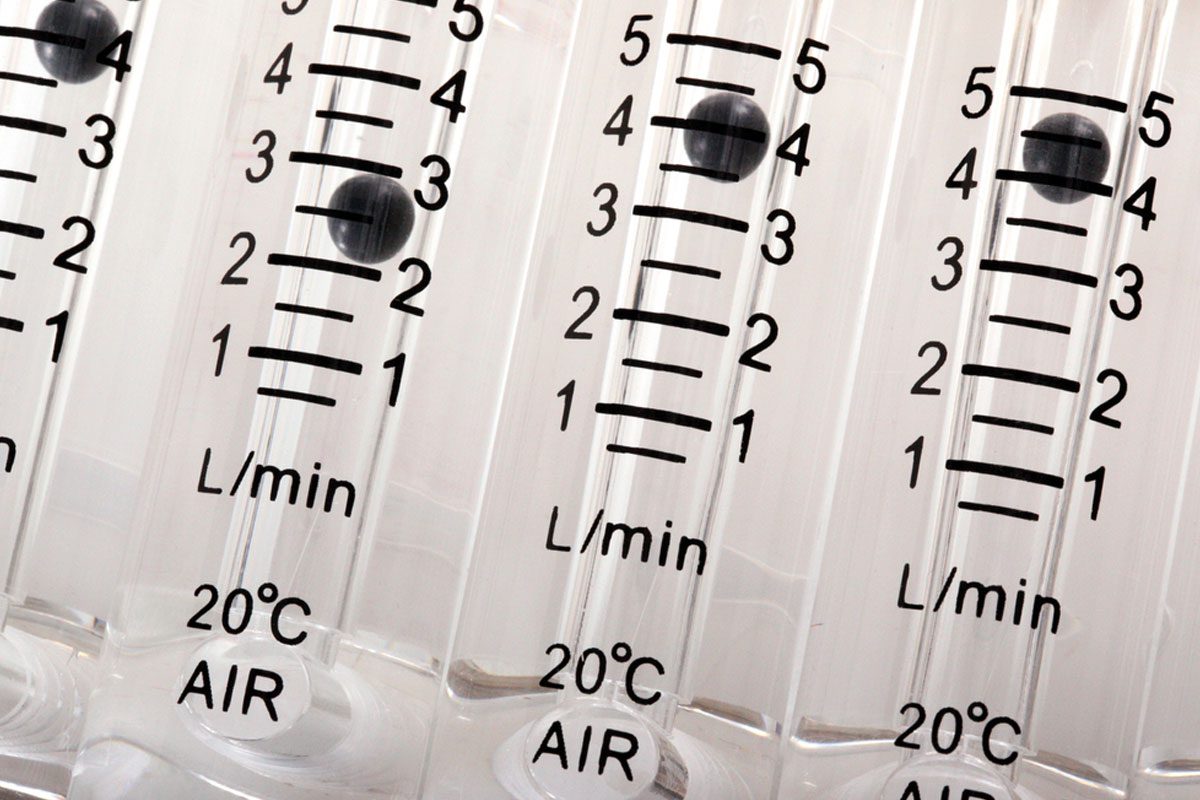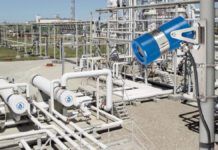A rotameter is a flow meter instrument that measures the volumetric flow rate of a gas or fluid. It consists of a tapered tube with a moving internal float. These are sometimes known as mechanical flow meters, gravity flowmeters or variable area flowmeters.
The gravity term relates to the fact the rotameter needs to be installed vertically, as the flow rate, is read from the float position in the tapered tube, determined by the balance of forces underneath the float from gravity. The metering tube starts with the smaller taper at the bottom and expands out to the top, with the scale graduations on the tube. With no flow, the float sits at the bottom of the tube, as the fluid flow increases the float begins to rise until an equilibrium is maintained with the viscous forces and gravity.
With good care and cleanliness, they can provide excellent results for relatively small cost. Rotameters are only designed for a single reference condition, and measurement errors will arise due to changes in temperature, pressure, humidity, viscosity, gas type, vibration, installation misalignment, dirt, float damage, pulsations or float instability.
Normal accuracy of a rotameter varies between 1 – 10% of FSD and often they only have a limited turndown ratio of 10:1, nevertheless, rotameters are simple, low cost devices that can provide very good flow measurement solutions for a great deal of applications.
The Young Calibration laboratory (UKAS Lab 0604) can provide you with a cost effective, professional flow calibration solutions for all air flow rotameters.







